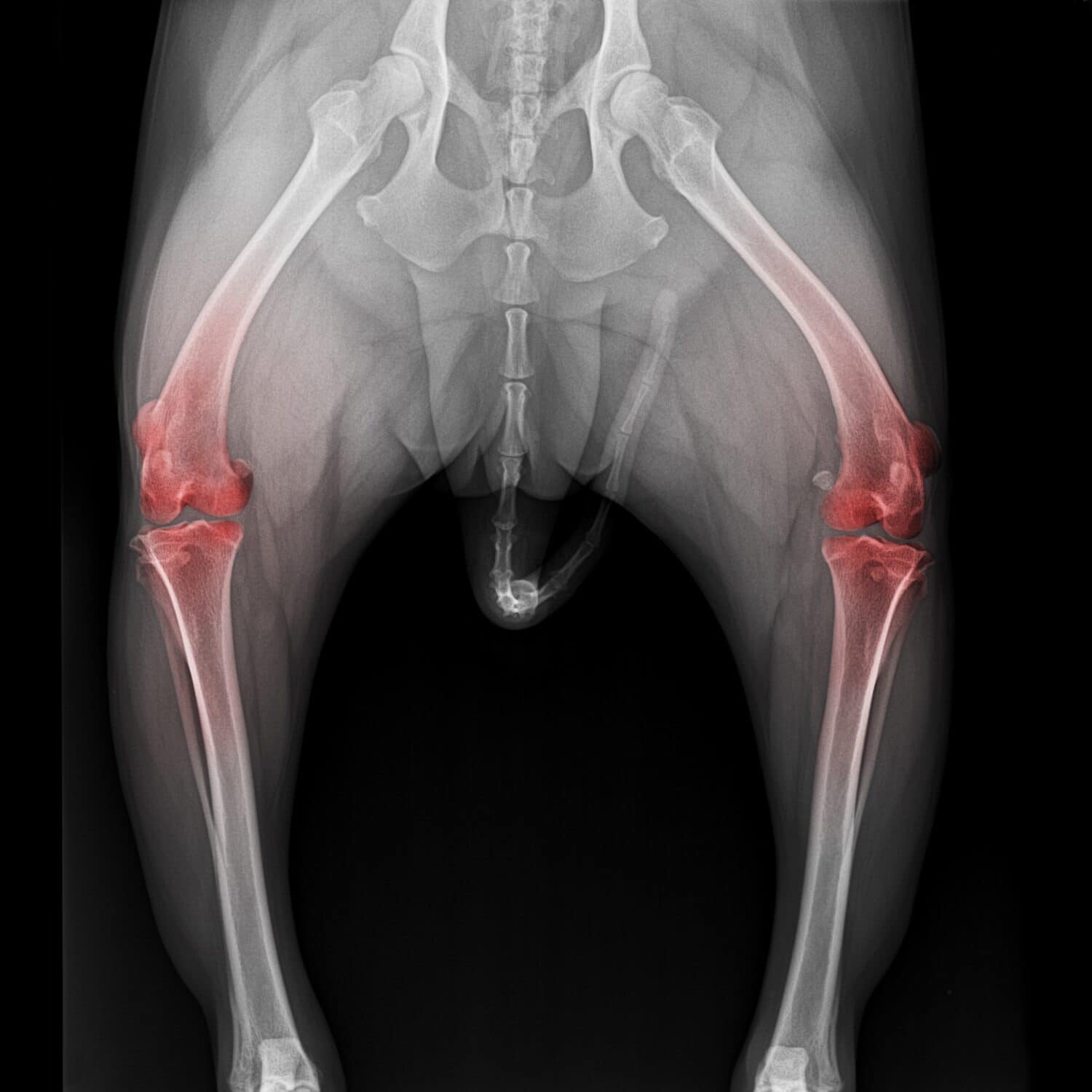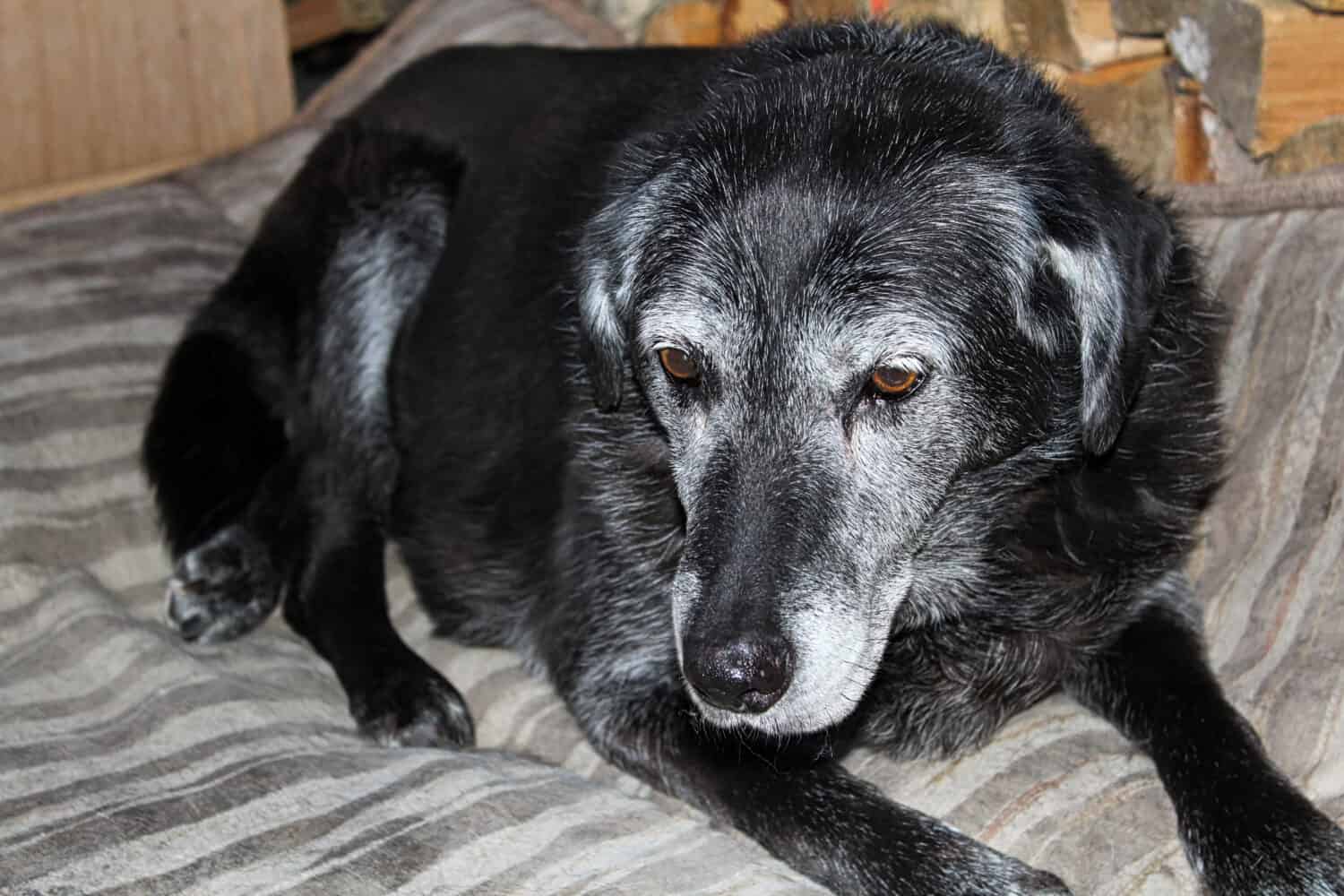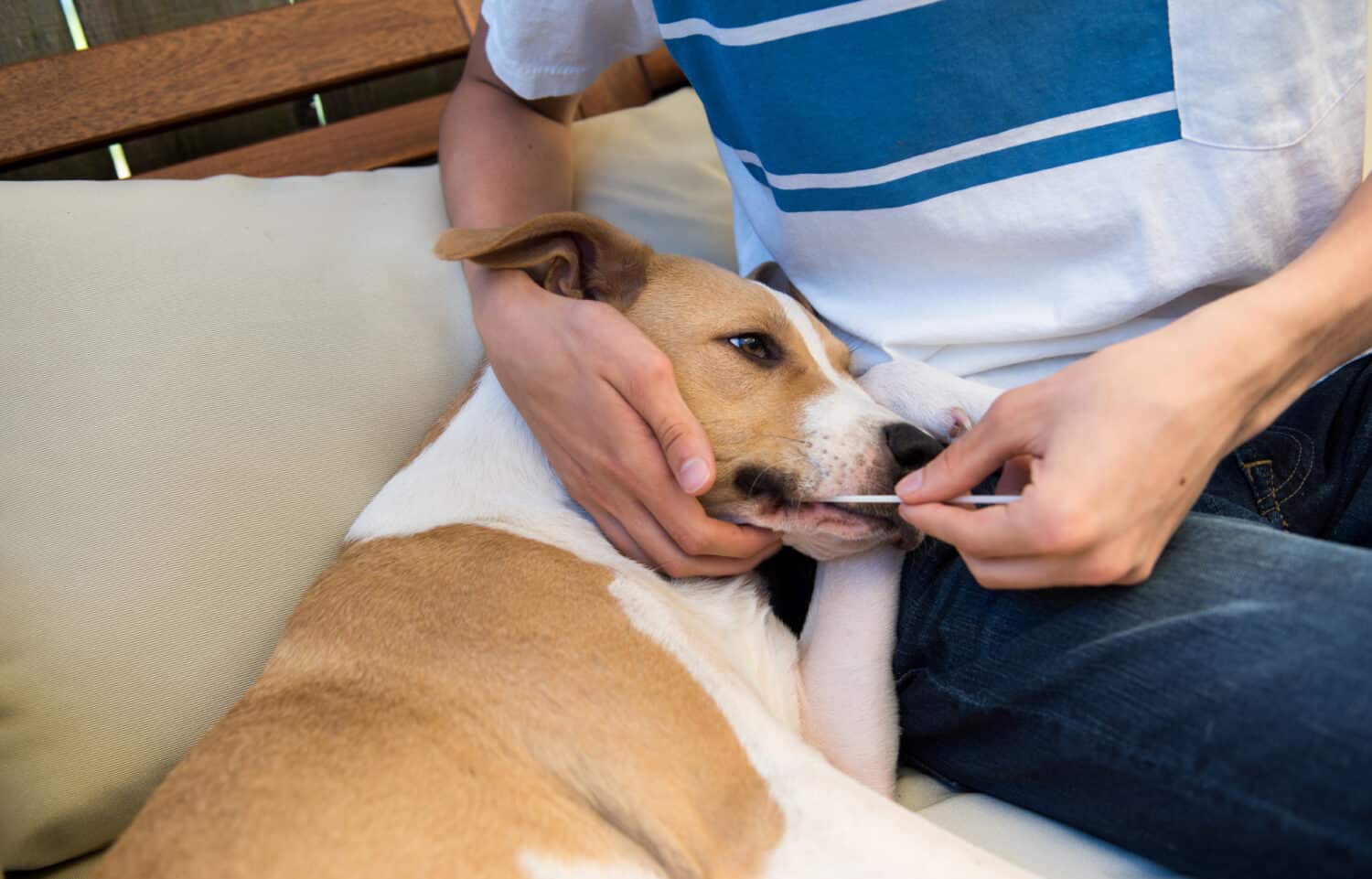A common question or concern is determining a pet’s age upon adoption. It can be challenging to determine particular needs, especially when you are still figuring out your new companion’s history. As each dog goes through each stage of its life, their needs change. A puppy may need a quality diet and training to aid with its development. A senior citizen dog may need more medical care and patience. Veterinarians offer DNA or genetic testing to determine what type of dog you have and disclose potential health concerns. But how do you officially tell how old your dog is? This article will reveal a listicle of tricks to determine how old your furry companion is.
1. Teeth

The worse the dental disease, the more likely the older your baby is.
©PixieMe/Shutterstock.com
Teeth are the number one way your veterinarian can determine how old your baby is. Between the ages of zero to 2 months, baby teeth begin to erupt. Owners may describe their puppy as having shark teeth! This is also the age when puppies are weaning off of milk and adapting to soft food. From 2 to 9 months, puppies develop their baby teeth fully, and then the adult teeth begin to come in. You may see teeth lying around the house or something; puppies will swallow them (this is entirely okay and normal)! The canine teeth are the last baby teeth to fall out, thus pushing your dog into “adulthood.” Another sign with the teeth is the development of calculus. If your canine friend has never had dental treatment, dental calculus will continue to build, causing severe dental disease.
2. Eyes

Depending on the breed, these eye conditions can typically occur between six and eight years of age.
©Lutsiv Maxim/Shutterstock.com
The eyes are not only the window to the soul but are another tell-tell sign of age. As dogs get older, they develop a condition called nuclear sclerosis. Nuclear sclerosis is a cloudiness or haziness over the eyes, but it doesn’t necessarily affect the eyes. It is similar to humans; as we age, our eyesight is not as excellent as when we were younger. This is similar in dogs. Cataracts and glaucoma are other eye conditions that dogs can develop as they age.
3. Haircoat

The above picture of this sweet baby is an example of dogs developing white or grey hair as they age. This hair color change can be seen around the muzzle, eyes, paws, or on patches of the body.
©Pommer Irina/Shutterstock.com
Like humans, dogs can start changing their hair coat like grey hair. A dull coat can be another indicator of old age; however, this could also be an underlying condition as well. Certain breeds tend to have more grey hair than others.
4. Muscle and Bone

Radiographs or X-rays in addition to a physical exam by a veterinarian can help provide evidence of arthritis.
©Intarapong/Shutterstock.com
As dogs get older, they can start losing muscle mass. This can often be noticed in certain muscular breeds like Pit bulls or Boxers. Losing muscle mass is a condition known as Muscle Atrophy, an indicator of illness or aging. Along with losing muscle tone, dogs can start having issues with their bones. Arthritis is a significant indicator of an aging dog. Over time, the wear and tear of life can begin to affect the bones, causing stiffness, difficulty getting around, and pain.
5. Behavior

Some dogs as they age may also become more agitated or snappier because of the changes to their bodies and mentation.
©Amelia Martin/Shutterstock.com
Older dogs will also have behavioral changes. You may notice your dog’s hearing is not as good as it used to be when they were younger. Most owners will think that their companion is being stubborn, but in reality, your dog can not hear that well. Senior dogs will also seem more spaced out or stand in corners. This can be an early sign of dementia occurring, which is common in older dogs.
6. Breed

Ask your insurance company if your insurance policy covers genetic testing for your furry companion!
©Anna Hoychuk/Shutterstock.com
As mentioned before, genetic testing and the other above factors will help determine a final age for your dog. Each breed is unique and has a different lifespan. For example, smaller breeds and mixed breeds tend to have a longer life expectancy than larger or pure breeds. A Boxer with dental calculus, blue haziness over the eyes but still getting around without issues, and very minimal grey hair could be estimated to be about five or six years old. Boxers have a ten to twelve-year lifespan and, with those mentioned conditions, can put our Boxers at “middle-aged.”
Conclusion
Many factors can help determine your dog’s age; however, there are preventative ways to help your dog from aging so fast. Keeping up with annual veterinary visits will help you keep track of your pet’s health. No matter a puppy or a senior dog, each milestone has different needs.
| 6 Signs To Determine Your Dog’s Age |
| 1. Teeth |
| 2. Eyes |
| 3. Haircoat |
| 4. Muscle and Bones |
| 5. Behavior |
| 6. Breed |
The photo featured at the top of this post is © Nikaletto/Shutterstock.com
Ready to discover the top 10 cutest dog breeds in the entire world?
How about the fastest dogs, the largest dogs and those that are -- quite frankly -- just the kindest dogs on the planet? Each day, AZ Animals sends out lists just like this to our thousands of email subscribers. And the best part? It's FREE. Join today by entering your email below.
Thank you for reading! Have some feedback for us? Contact the AZ Animals editorial team.







